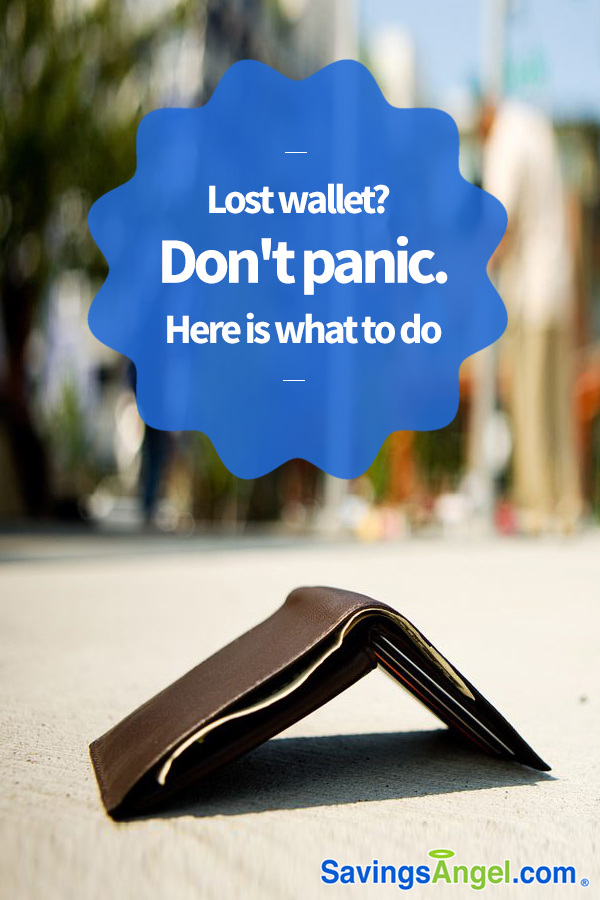 Lost wallet? Don’t panic. Here is what to do
Lost wallet? Don’t panic. Here is what to do
A few months ago a friend of mine lost her wallet for the first time ever. Upset and understandably nervous, she immediately began working on what she knew to do. If you’ve ever lost a wallet, you understand the panic. And if you never have, you need to know what to do.
Step 1:
First, return to the last place you’re positive you had it as soon as possible. Ask any staff members or others in the area if they’ve seen it. If it doesn’t turn up within 10 minutes or so of asking and looking, proceed to Step 2.
If you are unable to return right away to where you last recall having it, complete Steps 2 and 3 immediately. Even if someone found your wallet and is keeping it safe, it’s best not to wait.
Step 2:
Above all, call and alert your bank first. Because an unscrupulous person could empty your entire account before you even realize your wallet is gone, this should be your first call. Most banks and credit cards come with extensive fraud protection but the longer you wait to inform them, the more suspicious it can look. By calling right away, they will put a freeze on your account. Not only does this prevent any new charges from being approved, but it also helps remove suspicion.
Typically, the bank will give you the option to either close your bank card and receive a new one or put a 24-hour freeze on your card. Putting a 24-hour freeze is a good option if you’re not sure you actually lost it. Promptly closing the card is the best choice if you’re not sure where your wallet might be and especially if you suspect it might actually be stolen.
While you’re on the phone, a bank representative will verbally review any recent charges. Not only does this help reduce fraud, reviewing the recent activity will put your mind more at ease. Most bank representatives will encourage you to call your credit card company next.
Step 3:
Call and alert any and all credit card companies. Don’t forget store credit cards you might have been carrying. The process is almost identical to that of your bank. Just like banks, most card company reps are very thorough and will ask you if you’ve already called your bank or not, in case you haven’t.
What if you don’t know the number for your bank or credit cards? All companies post them online, so use your mobile to locate the numbers. Don’t have it or no mobile data? Ask someone nearby if they will help you so you don’t lose any time in placing your calls. Most people are sympathetic and will do whatever they can to assist you.
Step 4:
Call (or better yet visit) your local police department right away. The next call you should place or next stop you should make is to your local police department. There isn’t much they can do about a lost wallet. However, filing a report can help if you become the victim of identity theft from a lost wallet. And you never know, some honest, caring soul may have actually turned in your wallet there. This is what my friend found out less than one hour after she realized her wallet was gone.
Step 5:
Check your social media. Even though it seems like a weird step, honest people – and even local police – might be trying to reach you via platforms like Facebook if they found your wallet. Of course, do not post that you lost your wallet. Only check to see if you have any messages from a kind stranger or local law enforcement. If you do have a message from someone claiming to have your wallet, request that they meet you at the local police station, just to be safe. Honest people will have no problem with this.
Step 6:
Contact and cancel (or change your payment information) on all subscriptions and automatic payments. Reviewing your bank and credit card statements online will help you with a list. Most banks will have a new card to you within a few days (at most). In particular, this helps ensure you don’t miss any important payments.
Step 7:
Get a new driver’s license/state ID. Although this step is probably the most time consuming and dreaded, it is crucial.
Step 8:
Work on replacing all other cards and IDs. Don’t put off calling places where you had a membership like your gym, club stores, even libraries. Let them know your ID is lost so you need a replacement.
Step 9:
Put a fraud freeze on your credit report. This prevents any new lines of credit being opened in your name. Any attempts to open credit will be declined and flagged. Do be aware that starting a freeze is easy, removing it is not. However, it is a necessary step due to rampant identity theft.


